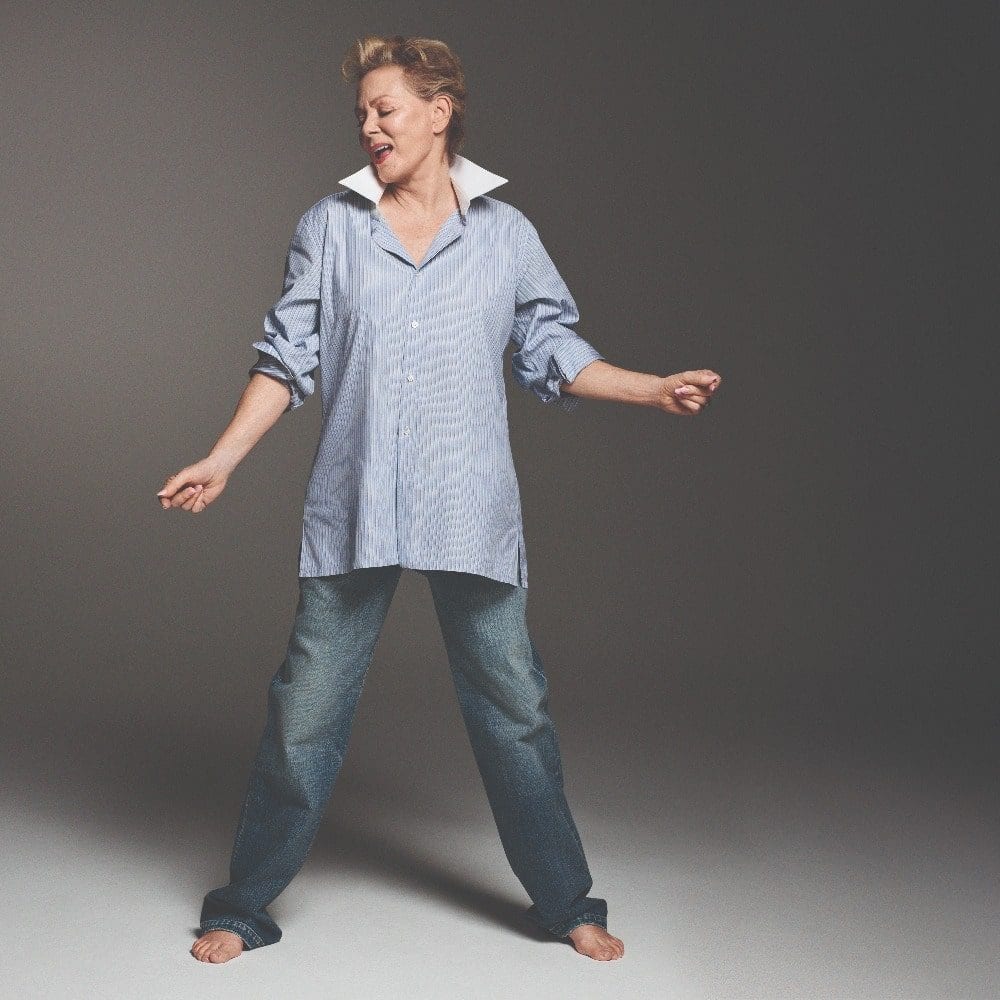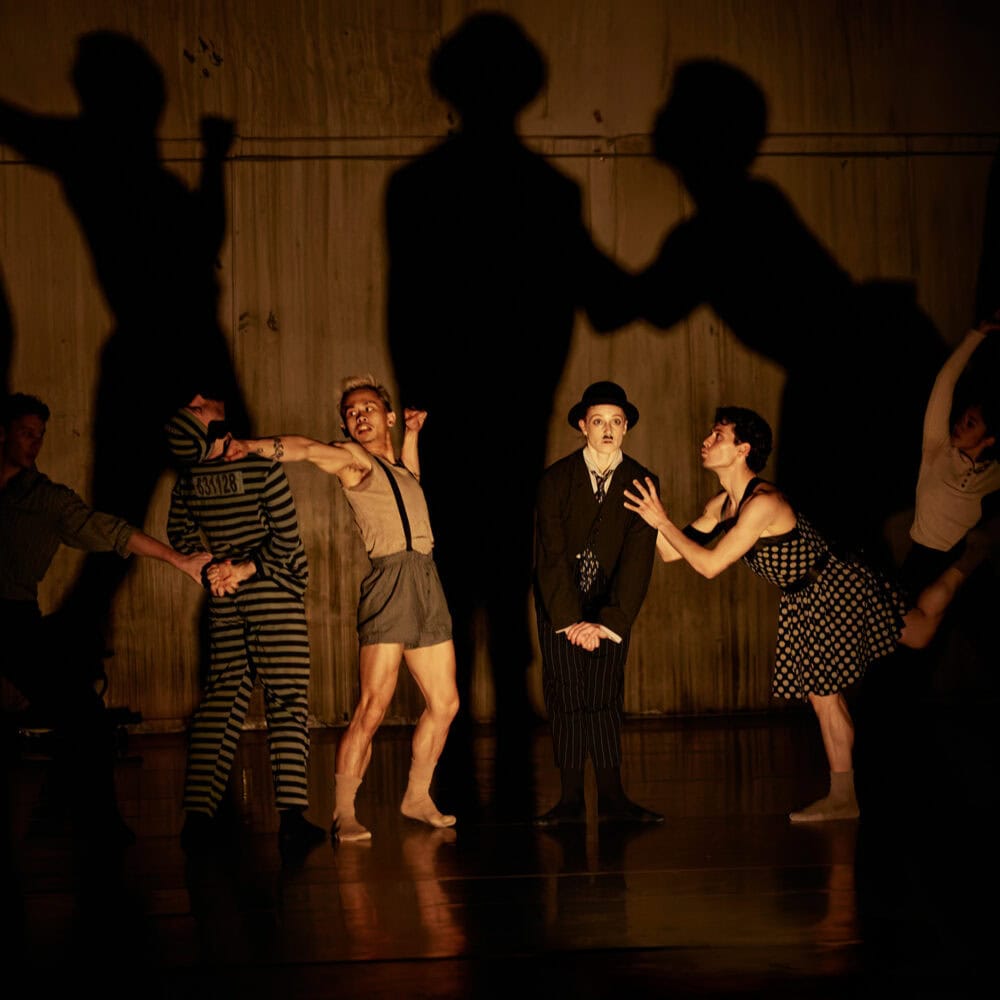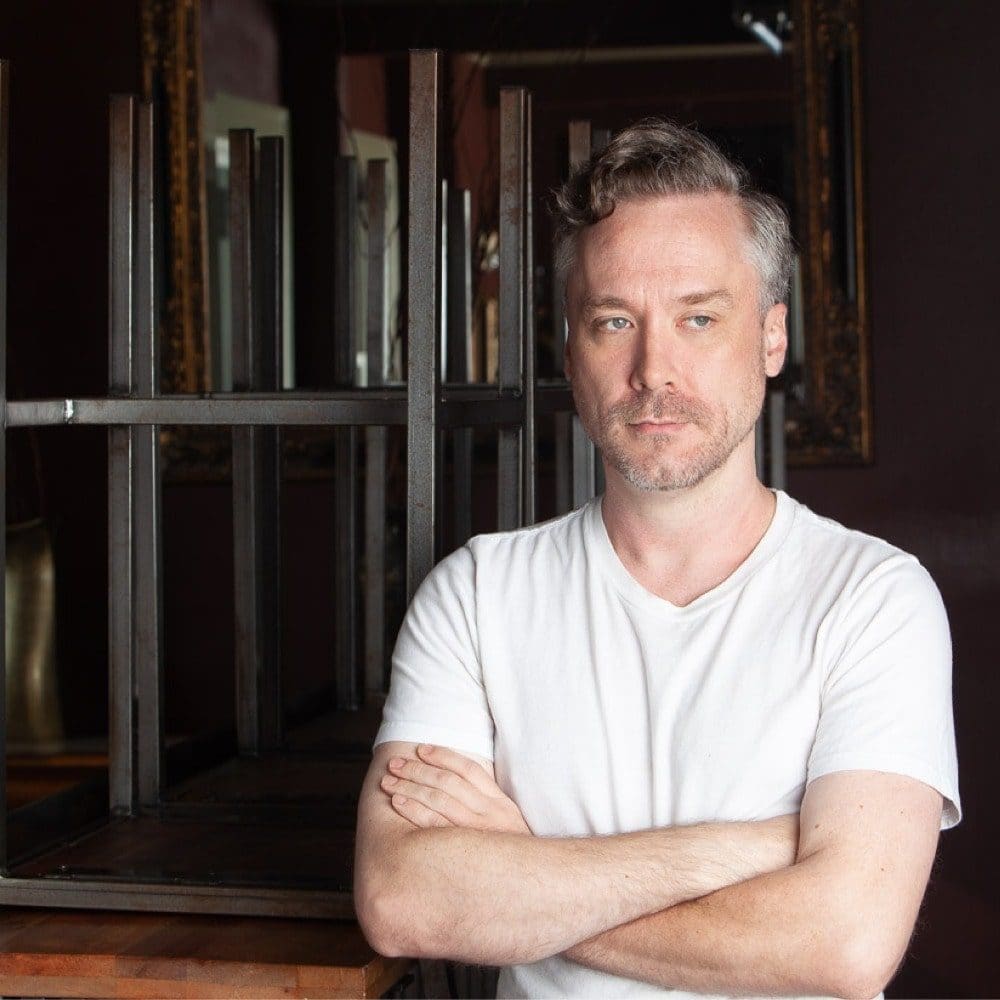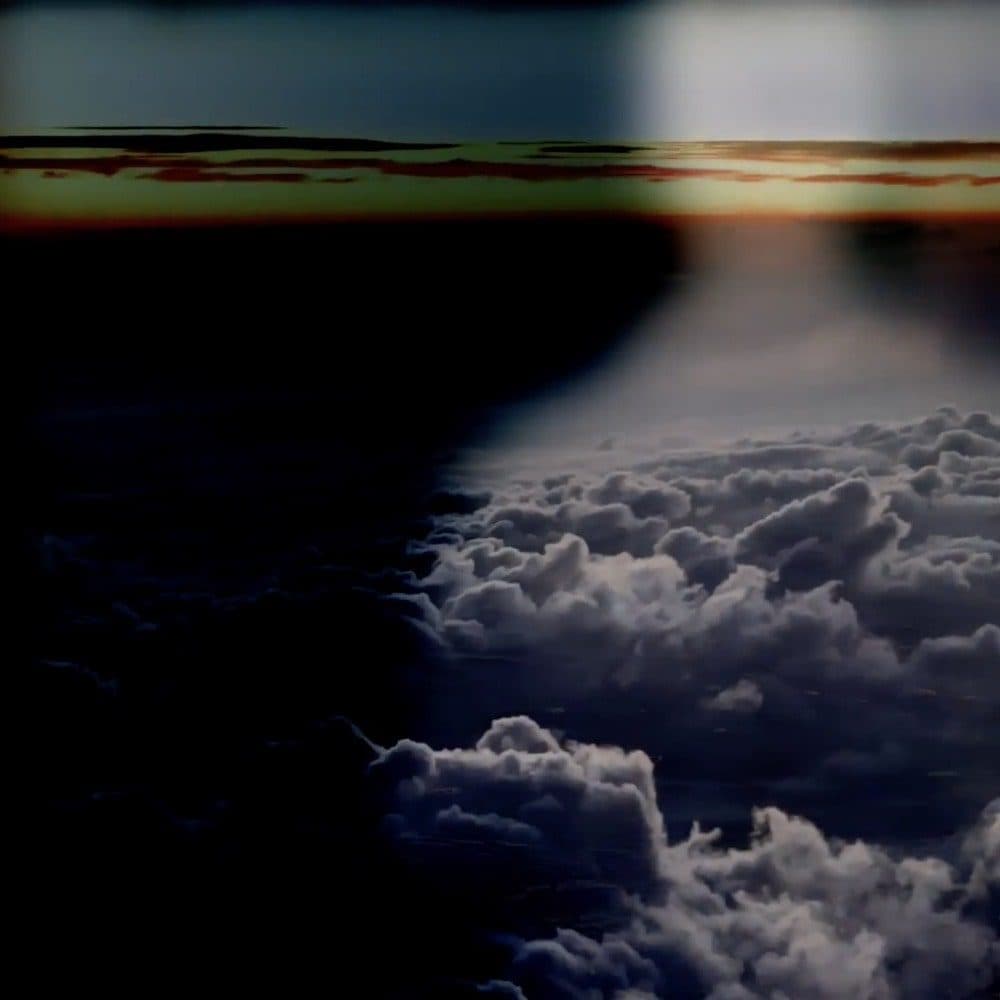Food & Drink
Blender Bender
Seattle's experience research lab tells stories through artwork, installations and architecture
By Rachel Gallaher August 7, 2023

This article originally appeared in the July/August 2023 issue of Seattle magazine.
Back in March 2021 — just as the drab Seattle winter started to give way to lighter days and slightly higher temperatures — a storefront niche on the always-thronged corner of Capitol Hill’s Pike and Broadway intersection underwent a transformation.
Another ERL project, an abstract, mixed-media mural depicting the products of a Silicon Valley client.
Photo by Brandford Devins
Formerly an easy-to-miss entryway sandwiched between a coffee shop and Neighbours Nightclub, the small, windowed portal suddenly glowed a soft purplish blue as dusk hit the city — a red neon sign above the door announced in all caps: PSYCHIC.
But approach the door and try to open it: no such luck. Locked. Instead, an eye-height viewing portal encouraged passersby to lean in and get close at a time when many people were still cautiously keeping their distance. Although there wasn’t an actual medium inside, curious lookers were treated to a fortune reading. Like a digital Magic 8 ball, a colorful projection triggered by sensors in the doorway would reveal a positive message such as, “There is no wisdom greater than kindness.” It was a hit of unexpected joy — a smile-inducing moment of levity when futures still felt uncertain.
The month-long pop-up, titled “Fortune Favors the Kind,” was the brainchild of Taylor Reed and Ian Campbell, two multi-hyphenate creatives — and the founders of Seattle-based art and design studio, Experience Research Lab (ERL), which tells stories through installations, architecture, and artwork. At the time of the installation’s unveiling, they were employed at an international design firm based on the top floor of the building.
“During the day, Ian and I worked from 9 to 5 on projects for the agency,” Reed says, “but then we’d stay at the office after hours, sometimes until 1 a.m., working on our own ideas and projects.”
“Fortune Favors the Kind” was Reed and Campbell’s first big collaboration that wasn’t tied to a corporate client — an experience that led them to ask, “What if we started our own studio?” The two were interested in producing experiential installations and environments that would not only surprise and delight but also facilitate conversation — about the art and between people who might not otherwise interact. They had grown tired of churning out the cookie-cutter work that glorified company logos.
“Much of what we were doing (for the creative agency) was privatized, and we felt disconnected from engaging the community through our art, which is a passion for us,” says Reed, who has a background in graphic and spatial design as well as installation artwork.
“In the end, there wasn’t a lot of variety,” adds Campbell, a longtime architectural designer and artist. “We got to the point where we wanted to explore our style.”
The two kept chugging along at their day jobs until mid-2022, when the company they worked for decided to close shop in Seattle to focus on its New York and London locations. Reed and Campbell were offered positions in the East Coast office and found themselves at a career crossroads.
“We talked about it,” Reed recalls, “and we decided this was our opportunity to go out and do our own thing. That same day, (what would be) our first client reached out to me via Instagram.”
The client was San Francisco-based Wildtype, a startup that produces cell-cultured fish by growing genuine salmon cells on plant-based structures made using cellular agriculture techniques (what could be called lab-grown fish). They were looking for someone to design an omakase tasting bar at their headquarters and were interested in the work they had seen on Reed’s social media.
He and Campbell took on the project under Experience Research Lab, evolving Wildtype’s initial ask for a “boat bar” into an elegant eating counter with an overhead plywood installation inspired by the simple lines of Japanese architecture. Hidden within the form are DMX-controlled lights that run sophisticated lighting sequences from a single source to create unique moods depending on how the space is being used.
“As a studio, we don’t approach the work as architects or graphic designers or branding agents,” Campbell explains. “With any project, we always look at things through the lens of the end-user experience.”
For ERL — which has since done work for the San Francisco Museum of Modern Art, Capitol Hill Block Party, JuneShine, and the University of Washington — that often means integrated technology that relies on sensors, thus making human interaction an integral part of the equation. In the right hands, what can run the risk of seeming gimmicky or “gotcha” moments becomes refined and even thought-provoking. And Reed and Campbell are all about bringing in the right hands.
“We use collaborators on almost every one of our projects,” Campbell says. That includes artists, designers, engineers, muralists, carpenters, and tech wizards who share a creative vision and help push ERL into new experimental territories. Aside from immersive art installations, they have painted hundreds of feet of murals, helped companies with creative branding efforts, and designed-and-built immersive museum exhibitions.
In October 2022, ERL hosted Lab Test 001 — what Reed and Campbell term a “cultural art activation” — in which they asked 12 local artists to create work around the cornerstone of their creative practice: process over outcome. The month-long exhibition included work by Ariel Parrow, Yale Wolf, Sean Hamilton, and others. It was a huge success, activating an empty storefront on Capitol Hill and creating a platform for a dozen people to show their work.
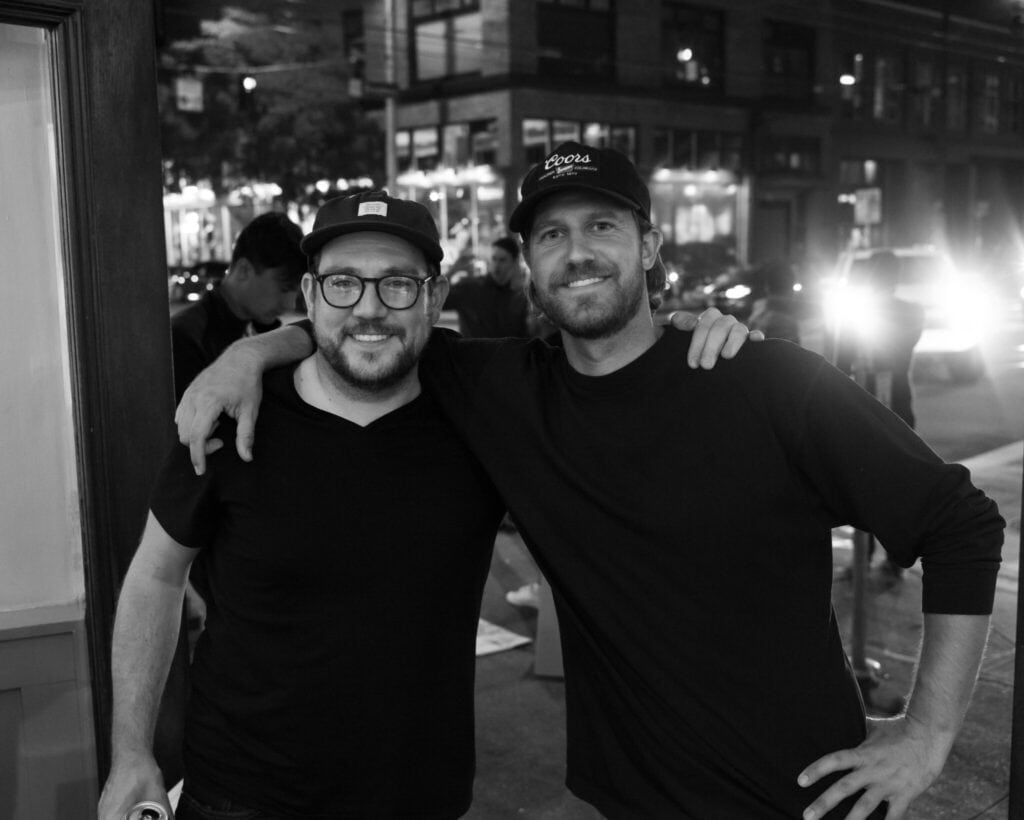
Ian Campbell and Taylor Reed.
Photo by Austin McDonald
The second iteration of that show, Lab Test 002, will be held from Aug. 26 to Sept. 8 in downtown Seattle’s former Banana Republic space, which was recently taken over by the XO Seattle curatorial team. The exhibition will feature 12 artists, this time focusing on the crossover of the tech industry and the interactive, experiential art scene. In typical ERL fashion, there will also be an immersive basement bar and a handful of other surprises.
For Campbell and Reed, it all comes back to what connected them in the first place: finding the right people to work with.
“Other creatives feed us,” Reed says. “The work we do wouldn’t be as strong if it were just the two of us. We’re always asking, ‘How do we keep surrounding ourselves with other artists and designers who have the same approach, the same drive that we do?’”
For ERL, the answer was easy: Keep building spaces, and people will keep showing up.

